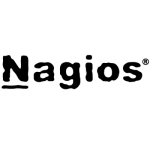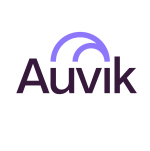How has it helped my organization?
If there's a connectivity issue, the packets have dropped, or the traffic is going through any of the routers, you can see where that is just stuck.
The individual’s bandwidth we do not know. For monitoring purposes, we can find the exact amounts through this NPM, Network Performance Monitor, and Network Traffic Analyzer. We can see who is using how much bandwidth and where the traffic is stuck. It provides visibility to show what the issue is in our network.
What is most valuable?
The solution is very good. Previously, in the solution, there was no more option for customizing the reports and the alerts. However, they’ve improved. Now, in the last two years, since 2021, they have had a new release, a new version, and there are a lot of options for customization of the dashboard, alerts, and reports.
Over the last couple of years, they have introduced features like NetPath and PerfStack. That is very helpful for any of the admins to troubleshoot issues to know precisely what is going on in nodes.
What needs improvement?
If we go for the NT license, then we have to purchase the NPM, Network Performance Monitor. That is a dependency. In all of the SolarWinds products now, there are only these products. For example, Net Traffic Analyzer is a product. If we go for the licensing, then we have to purchase a Network Performance Monitor. There's dependency there. If they could combine everything into one product, that would be very helpful.
The NT is the enhanced version of the NPM. They have not put a license on the different monitors of the NT. However, they have to include in the same manner in the NPM itself.
For NetPath services, right now, we have to manually install the events in the nodes. If there was something from the console side, we could post the event to the nodes. If there was automation, that would be helpful. Already there's automation for other types of things or in other features, like for communication of the nodes. However, for the NetPath feature, if we could automatically move the event from the console side to the application side, that would be a great feature.
For how long have I used the solution?
I’ve been using the solution for the last five years.
Buyer's Guide
SolarWinds NPM
December 2025
Learn what your peers think about SolarWinds NPM. Get advice and tips from experienced pros sharing their opinions. Updated: December 2025.
879,422 professionals have used our research since 2012.
What do I think about the stability of the solution?
It’s stable.
In 2020, as most people know, there was an attack on SolarWinds. At that time, there was a problem. However, in 2021, everything was good. If it wasn’t, we would have been looking for another solution. Everything has been stabilized.
What do I think about the scalability of the solution?
We are using one in five total devices connected to that SolarWinds. We are using an AP, Additional Polling engine that will scale the solution. Scalability is there.
Only the licensing part is different. We have to purchase more licenses on that part. Currently, we are monitoring 12,000 nodes. If we want to go to the 13,000 nodes, then we have to purchase one additional license, the Additional Polling license.
We have about 50 people using the solution. They are system admins. In the North, the solution is used vastly. In the South, the solution is used by the different departments. I'm not part of the South. I'm part of the North.
We do have plans to increase usage.
How are customer service and support?
For L2 or L1 problems, we are giving the support. For the L3 level, if the issue is beyond our reach, then we contact the support team from Solarwinds.
We have an online number. We have to call that number, and we’ll get support. They will support you, for example, if the system is down. Otherwise, you can open a support ticket, and they will help.
Overall, the support is good.
Which solution did I use previously and why did I switch?
Now we are using Tripwire also for some of our customers. It is also good.
I am not using any other products. However, there are some solutions that are free tools.
How was the initial setup?
The initial setup is straightforward. We have to just go to NetPath and just connect to the database. Once the connection is established to the database, then we will be up on both devices. There are a lot of options for onboarding the devices. It is easy. Anyone can do it.
There's an admin guide. There's a very helpful guide that SolarWinds has provided on their customer portal. There are training options too. You are well prepared.
The deployment took two to three hours to install the product and five to six hours for the entire deployment. It’s pretty fast if you have a good strategy.
While one person is enough to deploy or manage the solution, it would depend on how many devices you are dealing with.
If you are going to monitor 2,000 devices, one person is enough. If you're going to monitor a large number of devices, you might need two managers for all devices.
What about the implementation team?
We are the third-party vendor for the bank. We deploy the solution, and we support them. We provide professional services as well.
What was our ROI?
The basic ROI is the fact that the client is happy, and that’s all that matters.
What's my experience with pricing, setup cost, and licensing?
I’m only a technical person. I don’t have access to the pricing.
Extra costs come under support and maintenance. Obviously, we always consider support and maintenance under the same licensing cost. They'll only provide one year of support and maintenance.
Which other solutions did I evaluate?
We had to go for the SolarWinds. We are not able to work with any other solution.
What other advice do I have?
Once the solution is implemented, we'll populate whatever the dashboard is. However, some of the things will not populate. There is a need for services there. We can use the NetPath services feature. We can export that feature to the dashboard. However, it will be easy for any of the system admin to troubleshoot the issue.
I’d rate the solution ten out of ten.
Which deployment model are you using for this solution?
On-premises
Disclosure: My company does not have a business relationship with this vendor other than being a customer.


















